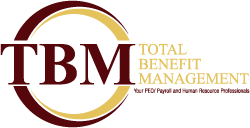- Total Benefit Management

Governor Cuomo Announces Regulations Implementing New York’s Nation-Leading Paid Family Leave Program
July 21, 2017
What You Need to Understand About the Google Firing and Free Speech at Work
July 29, 2017“Work without love is slavery.” — Mother Teresa
“Why You Hate Work” was the eye-catching title of an op-ed in the New York Times several weeks ago.
The phrase really bothered me, I guess because what the article had to say was right on the money. However, in addition to citing numerous research data that support the hyperbole of the title, the authors provide a list of sound solutions to meet the challenges discussed.
The lead author Tony Schwartz is CEO of The Energy Project, a consulting firm that specializes in helping companies increase employee engagement, or as I like to call it Employment Enjoyment. They open with a heart-chilling statement that all too many people can relate to:
“The Way we’re working isn’t working. Even if you’re lucky enough to have a job, you’re probably not very excited to get to the office in the morning, you don’t feel much appreciated while you’re there, you find it difficult to get your most important work accomplished, amid all the distractions, and you don’t believe what you’re doing makes much of a difference anyway. By the time you get home, you’re pretty much running on empty, and yet still answering emails until you fall asleep.”
Wow, what a commentary on our work-life relationship! Their research consistently shows that increasing numbers of not only middle managers, but top-level executives as well, are feeling these same pangs of exasperation and frustration. They reference a study by a clinical psychiatrist at Harvard Medical School whose research focuses on employee burnout. In his recent study of 72 senior leaders, he found that every one of them reported signs of burnout.
As I have pointed out in previous discussions of employee engagement, only 21 percent of employees in the western world are engaged in their work. Globally, according to numerous Gallop poles, the number drops to an unbelievable 13 percent! That’s a tragedy, as it says that the vast majority of people are not even close to reaching their human potential. Schwartz and Porath conclude that “For most of us, work is a depleting, dispiriting experience, and in some obvious ways, it’s getting worse.”
Much of the problem is due to the ever increasing demand on employees’ time, taking most of them into a space where it exceeds their capacity and therefore the where-with-all to truly access their innate talents and achieve an end result that is beneficial to the company, to the customer and to them. Why is this is happening?
First, we have become a global community with business competition never as fierce as it is today. Second, subsequent to the financial crisis, there isn’t an industry that hasn’t reduced its workforce by one means or another, and yet, the demand on employees has increased. And third, although stellar growth of digital technology has provided ready access to endless information, and in some cases, even access to wisdom and knowledge, we are constantly overwhelmed with our hyperspace connectivity. Sometimes we just feel emailed to death!
What’s the path out of this conundrum? The need for employees to be more efficient and do more in less time and with fewer resources will not go away any time soon. How do we deal with this in a way that not only gets the job done well, but also provides value and fulfillment to employees? The Energy Project has some concrete suggestions.
In a joint study with the Harvard Business Review of 12,000 white-collar workers across a broad range of companies and industries, they found the following outcomes to be nearly irrespective of industry or company. Employees are more fulfilled and productive when four core needs are met:
Spiritual
First and foremost, doing more of what they do best and like to do, and feeling connected to a higher purpose. In my book BALANCE: The Business-Life Connection, I say they have found their innate Essence and connected it with a Need in the world that makes it a better place. They are working at their Life Purpose. That leads to Gratitude, which is always a source of long-term Fulfillment. The spiritual core need is the strongest factor in increasing employee job satisfaction and company loyalty. It’s simple. It starts with the leadership team. If they are energized by the vision and mission of the company, their very actions spread like a viral contagion. Everyone wants to be part of a dream that makes the world a better place. Thus, the leadership and the employees become much more engaged when their work provides them with opportunity to make a positive difference in the world.
Mental
Focusing deeply on their most important tasks and defining when, where and how they get their work done. They don’t want to be distracted by endless and often useless poorly managed meetings. This is most often a trust challenge for employers. We have been educated and programmed with the “nose to grindstone” model. If an employer cannot see an employee working hard and long hours on the shop floor, he wonders whether the employee is truly working and contributing. The more effective channel to engagement is to provide the employee with a task and timing for delivery and then let him or her, within negotiated reason, decide where and how to get it done best for the company. The quality and quantity of the output should be the measure of performance and not physical observation of long hours of effort.
Emotional
Let’s face it, we all want to be loved. Feeling valued and appreciated for their contributions by management and their peers is a powerful driving force for all employees. Study after study over the years tells us that after a certain level of financial reward, feeling a sense of appreciation and value is the most important motivator for employees. Have a sense of caring by the employee’s supervisor increases their level of engagement and loyalty to their company.
Physical
Opportunities to renew and recharge while at work. Every two to three hours of intense effort, this could take the form of a 15-miute walk around the block or the building, a brief meditation, or even a 10-minute catnap. For example, The Energy Project study found that employees who take a break every 90 minutes of intense work achieve 30 percent higher levels of focus than those who take just one break during the day. They also report 50 percent greater capacity to think creatively and 46 percent increase in a sense of well-being. When employees work well beyond the normal 40-hour work week, their efficiency drops substantially and they feel less engaged. At Catalytica Pharmaceuticals, a company my colleagues and I built in less than 5 years from 5 people to 2,000 people and a billion-dollar publicly-traded enterprise, we had a mediation room, which was used frequently by employees to recharge and renew their creativity. It works!
This research shows that the more each of these four core needs is met, the more productive, loyal and satisfied are the employees. And, when employee performance escalates, a positive impact is felt on the bottom line, as well. Employees are significantly more engaged.
Schwartz and Porath remind us of a well-known study carried out by the Gallop organization. In a 2012 meta-analysis of 263 research programs involving 192 companies, Gallop found that companies in the top quartile of engaged companies, when compared with the bottom quartile, had 22 percent higher profitability, 10 percent higher customer ratings, 28 percent less theft and 48 percent fewer safety incidents.
Finally, a word about trust as it pertains to Employment Enjoyment. Trust is the most reliable predictor of employee satisfaction, productivity and engagement. Inspired leaders know this and behave in a way that demonstrates complete trust. In my work over the years in founding and leading the growth of companies, I have found four company values that imbue trust throughout the company.
- Be sure that all employees know that what they are doing is contributing in some way to a better world. It often is the case, but if not articulated clearly, employees may not recognize the value of their efforts.
- Assure that all employees know and understand the overall strategy of the company.
- Create the means for employees to clearly see how their efforts directly contribute to the corporate strategy.
- Provide periodic feedback to all employees as to the company’s progress and the impact of their efforts.
The implications here are that you can’t command enthusiasm, creativity and passion. These are gifts that employees bring to work every day. They use these gifts if and only if they are engaged. Engaged employees, in fact, engaged people in general love to serve. Engagement was an option in the past; now and for the foreseeable future it’s an absolute necessity for long-term profitability and success.
Employee engagement is a powerful force. When accessed by the core needs mentioned above, even though employees are working with fewer resources and expected to deliver more, there is a remarkable triple win. Employees produce more, finds greater fulfillment, the company profits increase, and the world becomes a better place in which to live.
It’s simple human physics. When employee engagement climbs from 20 to say 60 percent, the employee is three times more productive and a happy camper, as well. Everybody wins. This is the only way in which companies can succeed for the long run under more demanding criteria. What are you waiting for?
This article was originally published on Huffington Post.

